What is Pork Chashu Donburi?
Chashu is a tender pork dish made by slow-cooking pork belly in a simple broth and then marinating it in soy sauce, sake, and mirin. It is most commonly served on ramen but can also be used in other dishes such as donburi or fried rice (chahan).
While originally from Cantonese cuisine, Japanese Chashu is different in that it is braised and marinated with a teriyaki-like flavor.
Chashu is usually rolled before cooking, resulting in a beautiful swirl pattern when cut into slices. The end cuts are often used to make chashu don or fried rice, which are meals served exclusively to employees in ramen restaurants called “makanai meshi (まかない飯).”
Some of these makanai dishes have gained popularity and made it onto menus across Japan, such as Omurice, Chicken Nanban, and Taiwan Ramen.
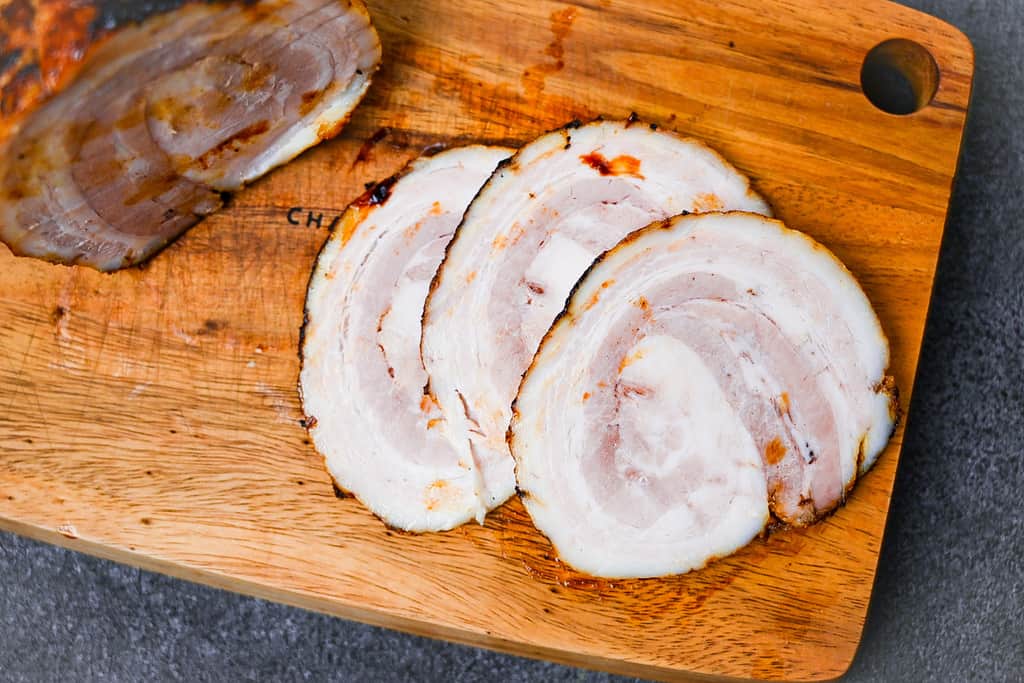
In other words, if you want to carry on the spirit of makanai-meshi, it is recommended to use end cuts or crumbled pieces of chashu made for ramen as chashu donburi, instead of making chashu from scratch, especially to make chashu don!
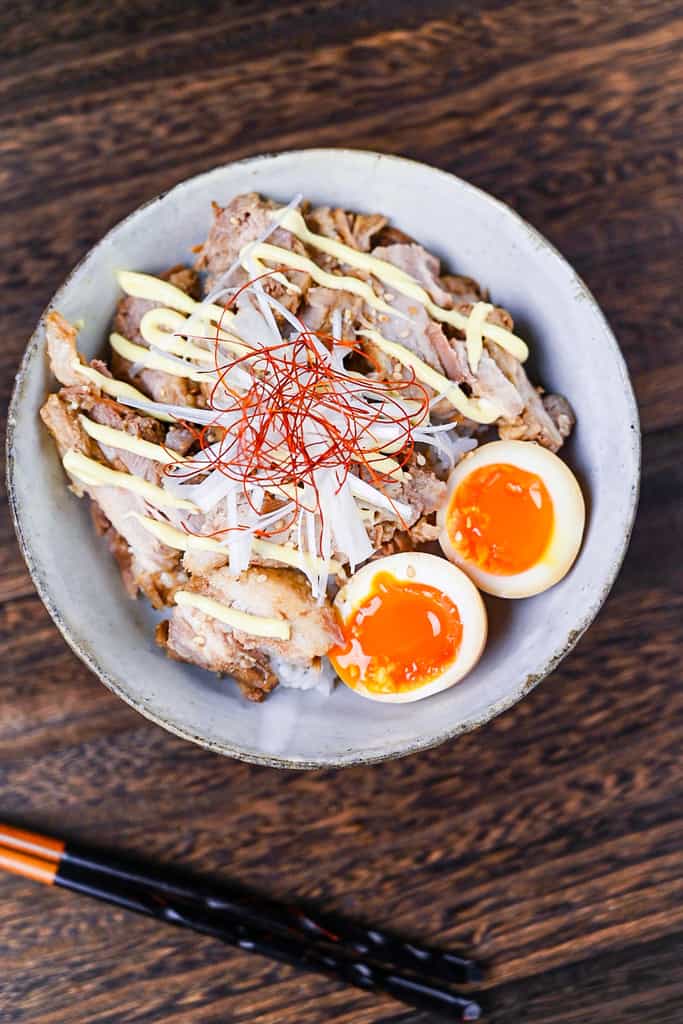

How I Developed This Recipe
There are usually two common issues when making homemade chashu. The first issue is that the long cooking time makes it difficult to prepare small quantities. The second issue is that it can be tricky to know what to do with all that chashu you end up with. While chashu is a popular topping for ramen, it’s not a practical choice for every day.
To tackle this issue, I came up with a recipe for chashu don, which is a great way to use up leftover chashu or the end cuts.
If you find yourself with extra chashu and aren’t sure what to do with it, I highly recommend trying this chashu don recipe.
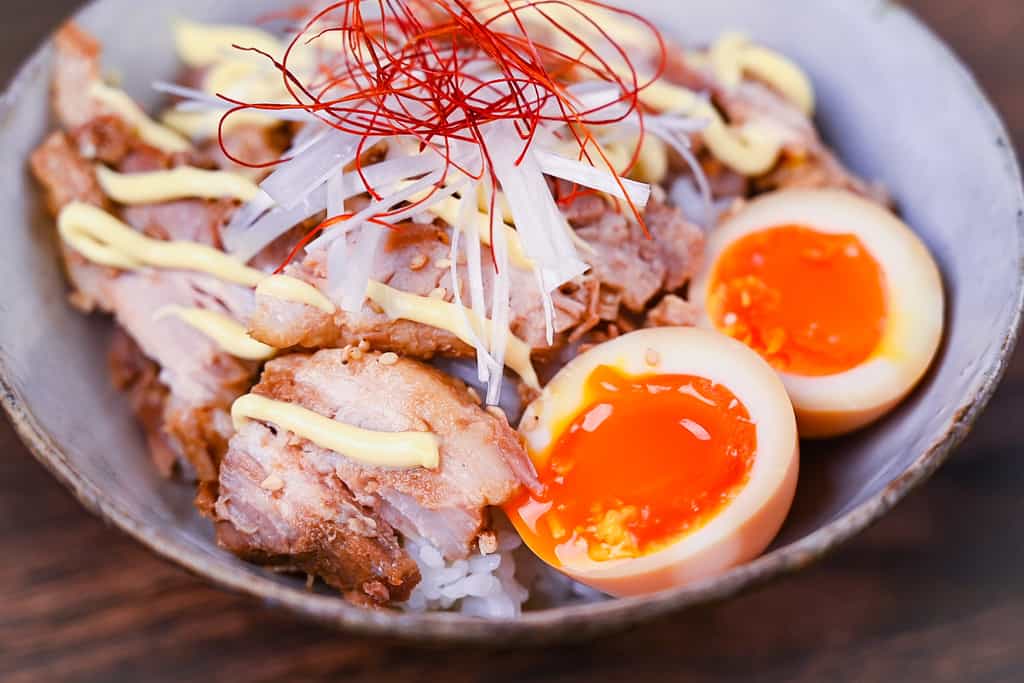
Visual Walkthrough & Tips
Here are my step-by-step instructions for how to make Ramen Restaurant-style Chashu Donburi at home. For ingredient quantities and simplified instructions, scroll down for the Printable Recipe Card below.
Pierce a block of pork belly on both sides and pat it dry with kitchen paper. Starting with the thinnest side, roll it up tightly and secure with butcher’s string or a net.
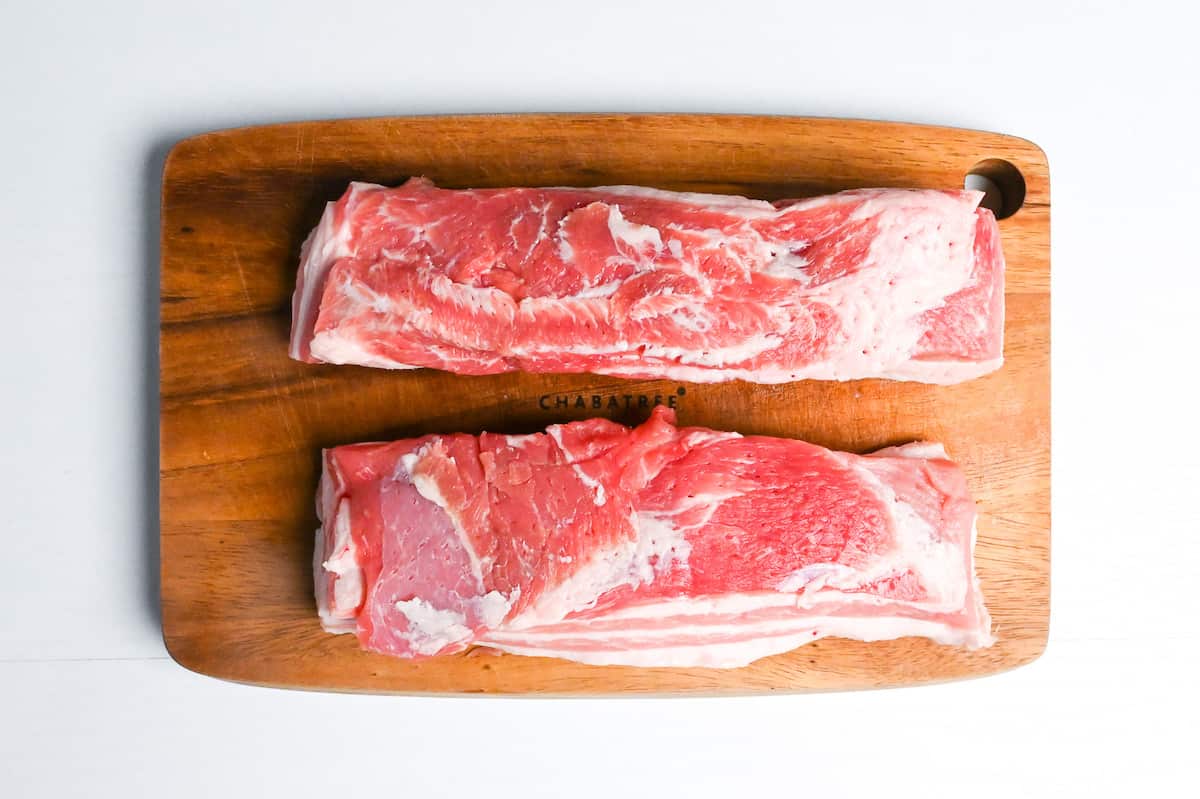
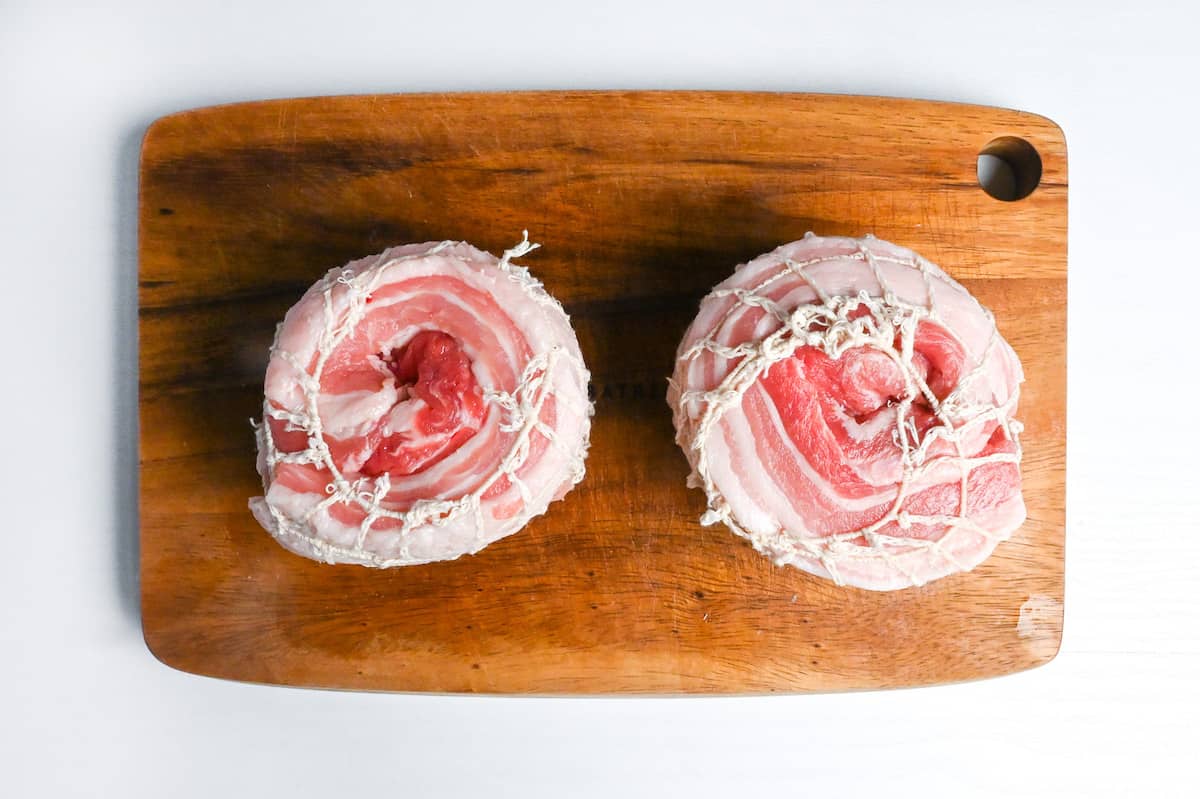
Place the pork in a large pot and fill with cold water until submerged. Bring to a boil over medium-high heat and scoop out any scum that floats to the top. Once boiling, lower the heat to a simmer.
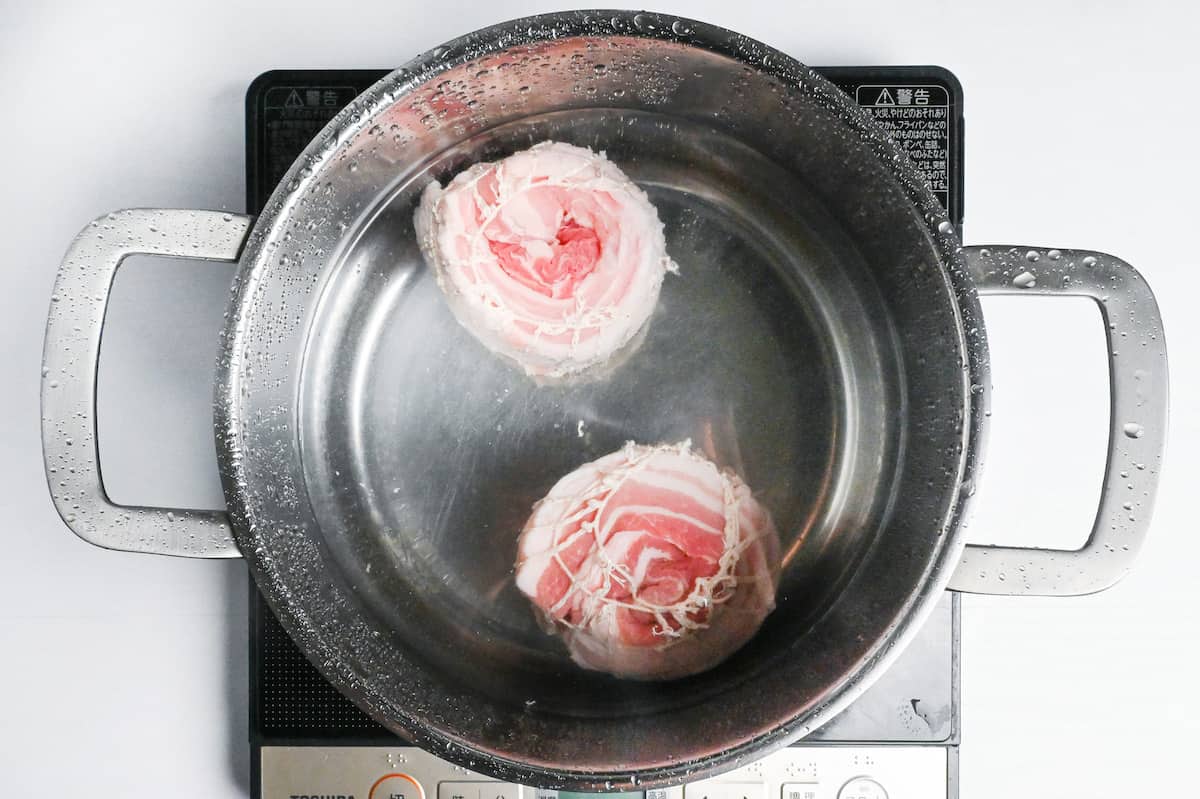
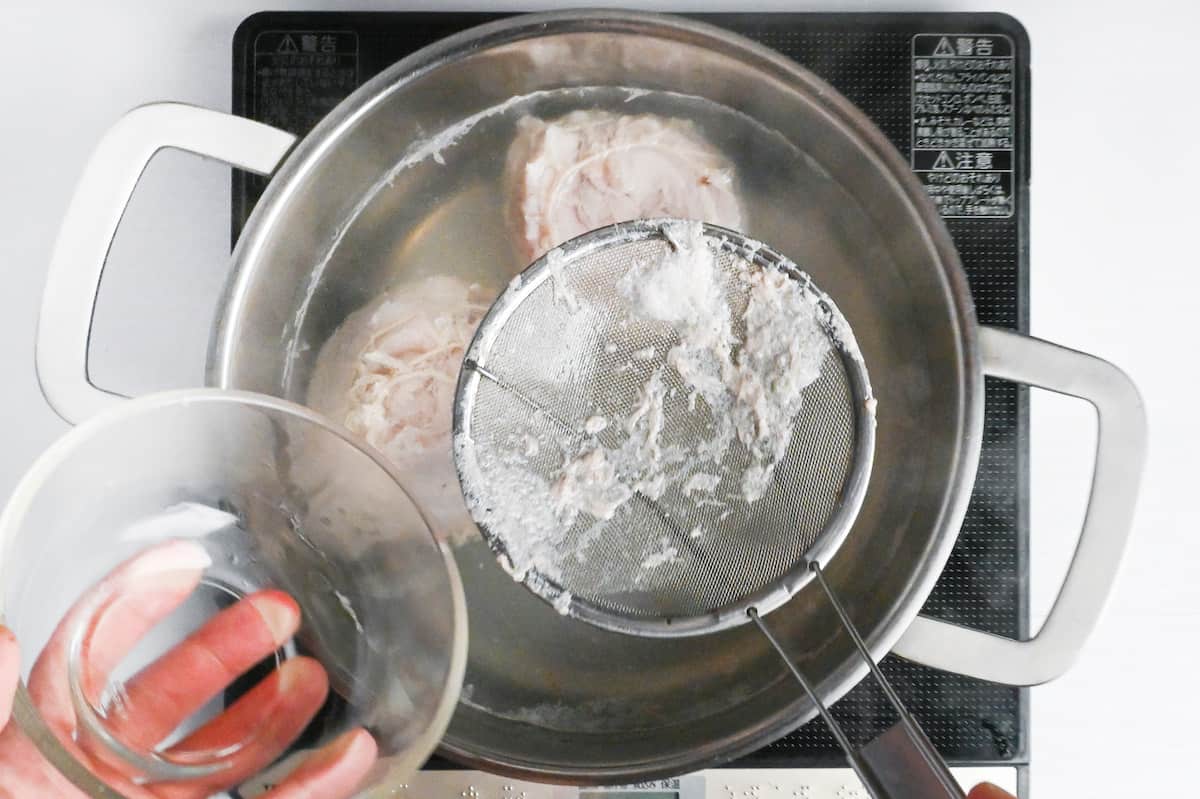
Add the green part of Japanese leek, roughly chopped onion, thickly sliced fresh ginger, whole garlic cloves, and a dash of rice vinegar to make a flavorful pork broth. Place a drop lid on top and simmer for 2 hours, turning the pork over halfway through.
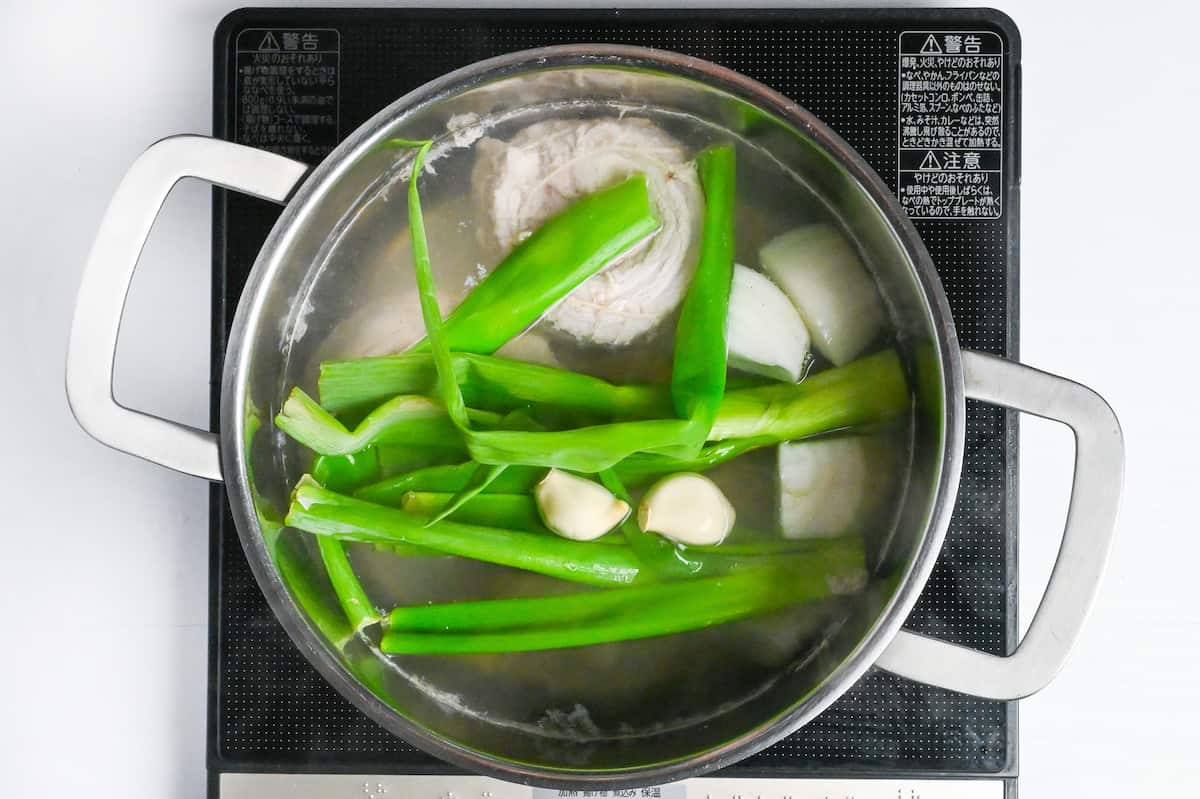
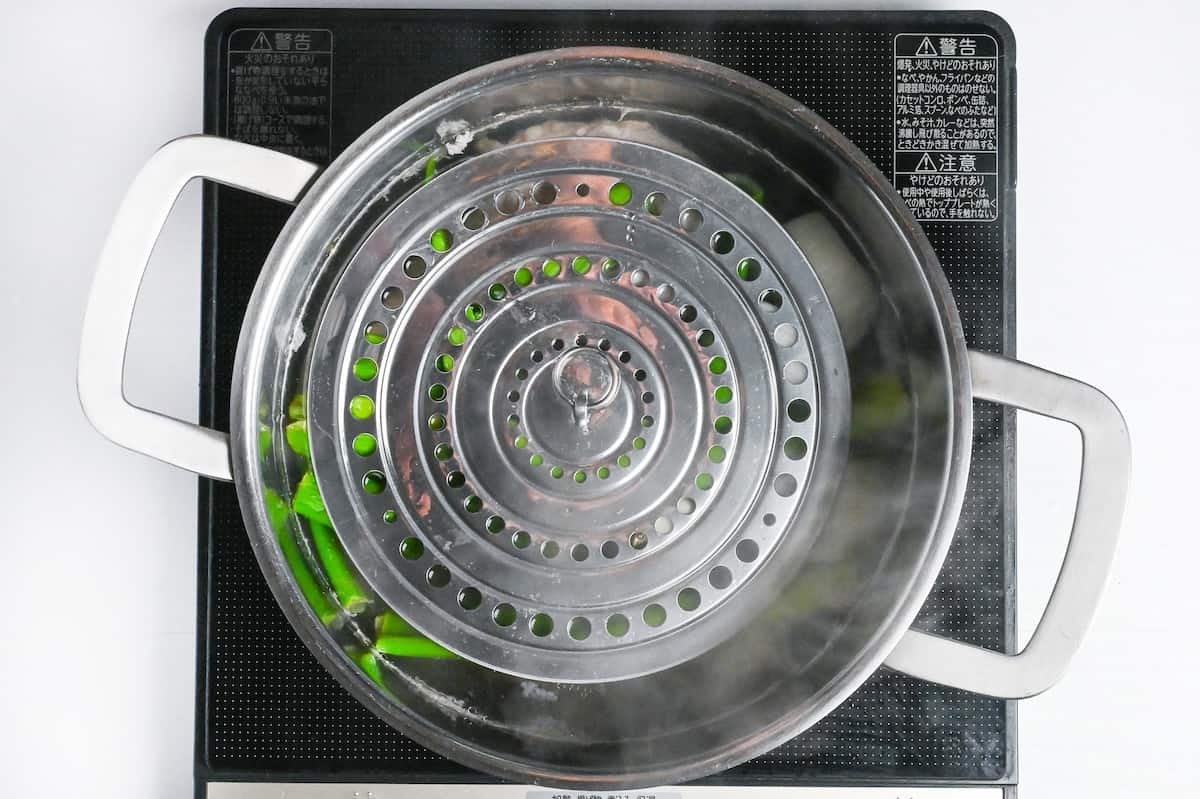
Remove the pork from the pot and place in a ziplock bag. Transfer 250ml of the pork stock to a small saucepan.
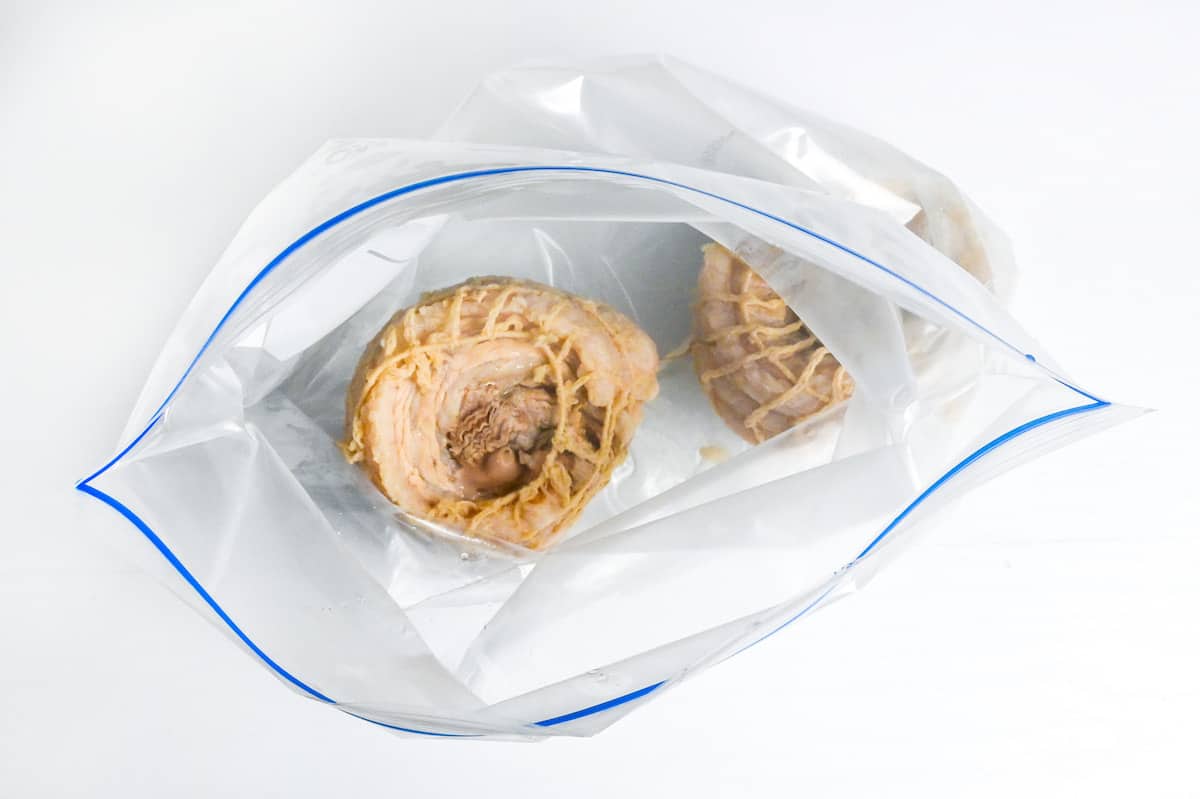
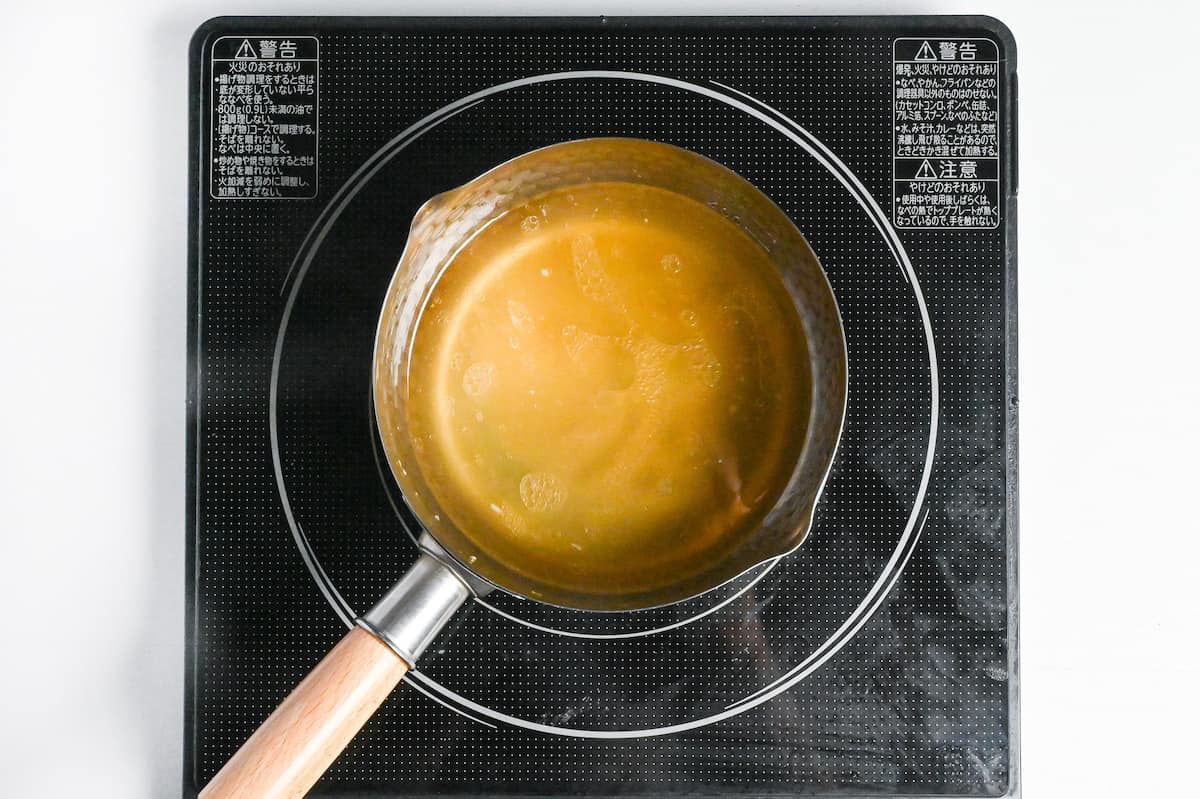
Add sake, mirin, soy sauce, and sugar to the pork stock, boil for 1 minute, then remove from the heat.
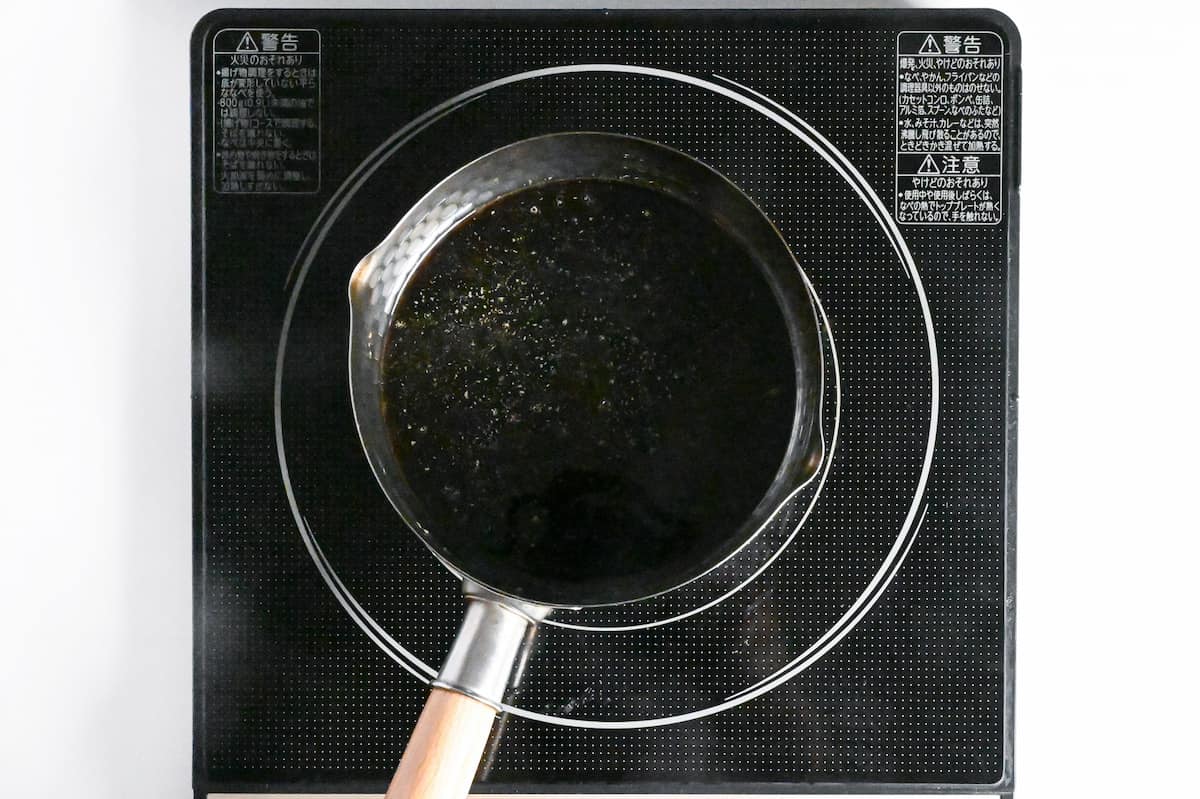
Once the marinade is cool to the touch, pour it into the ziplock bag and add soft-boiled eggs (optional). Marinate for 12 hours (ideally overnight).
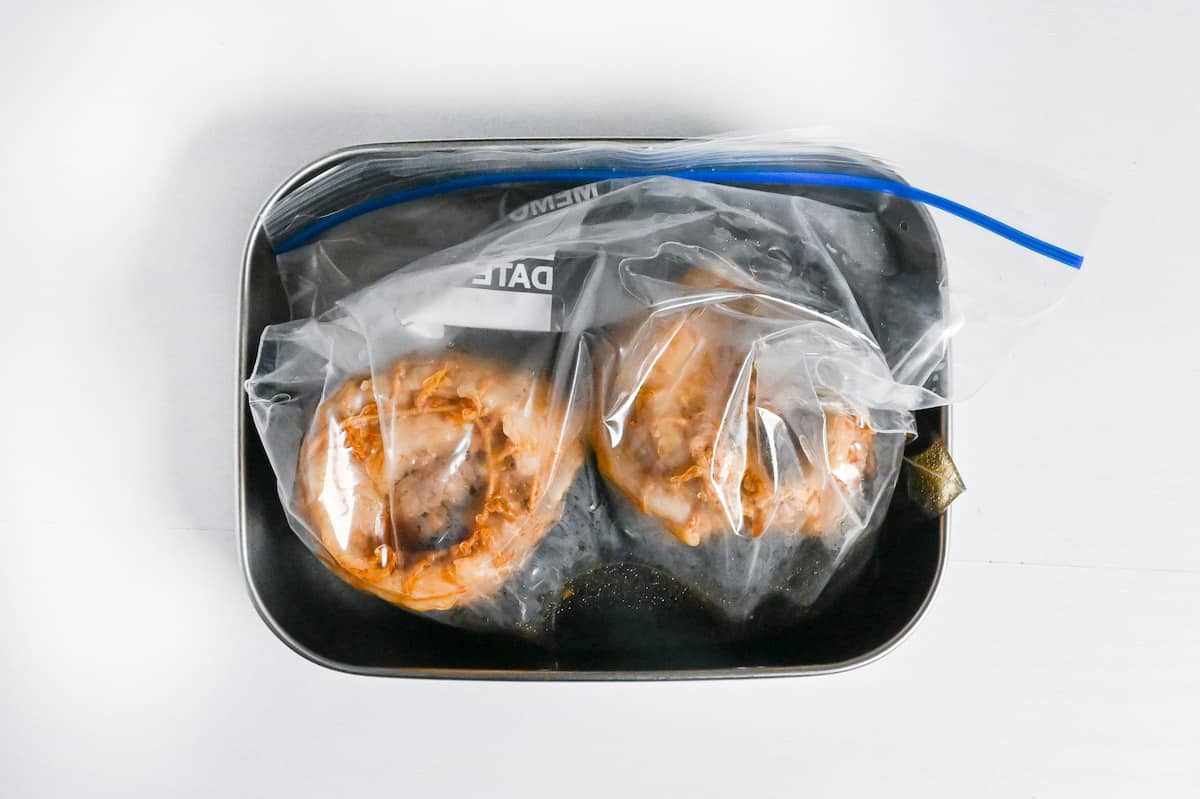
Once the pork has finished marinating, heat a frying pan medium-high and add the chashu and 100ml of the marinade. Fry until the marinade has thickened and turn the chashu occasionally until glazed all over.
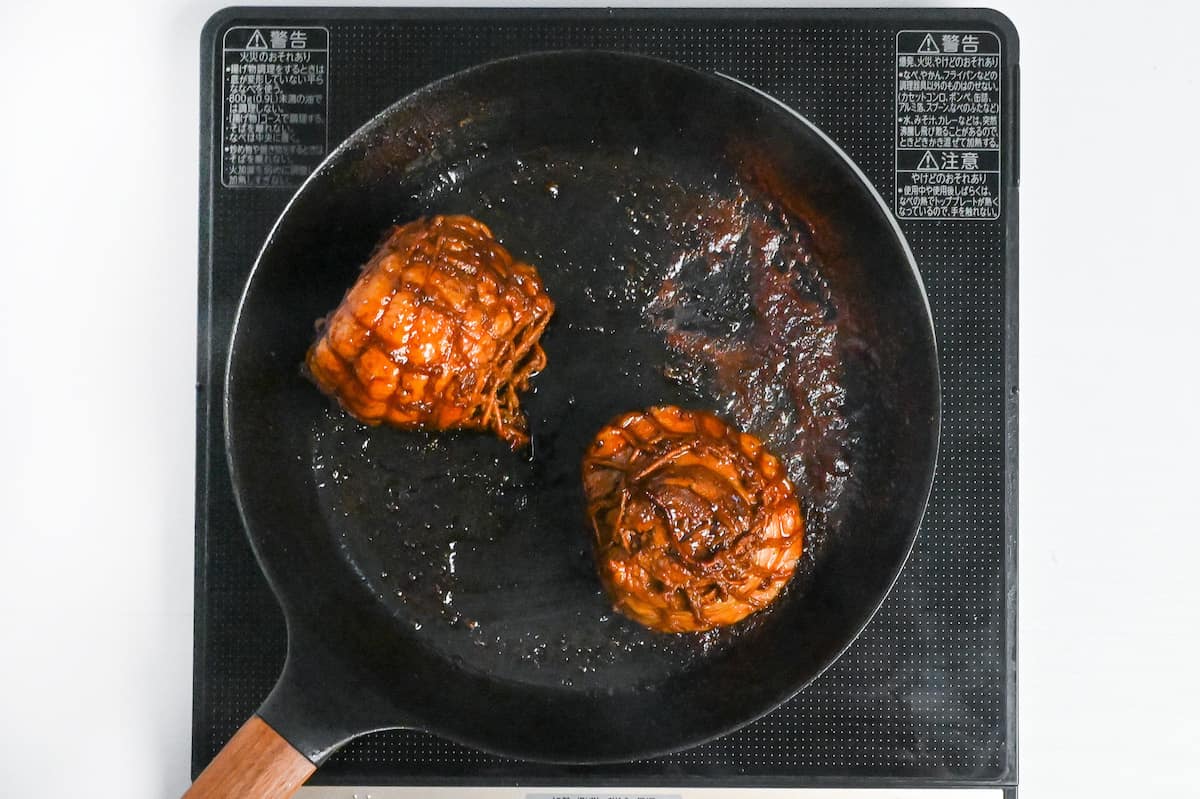
Rest the chashu for 5-10 minutes before slicing. Typically the beautiful middle slices would be used for ramen and the end cuts would be used for donburi.
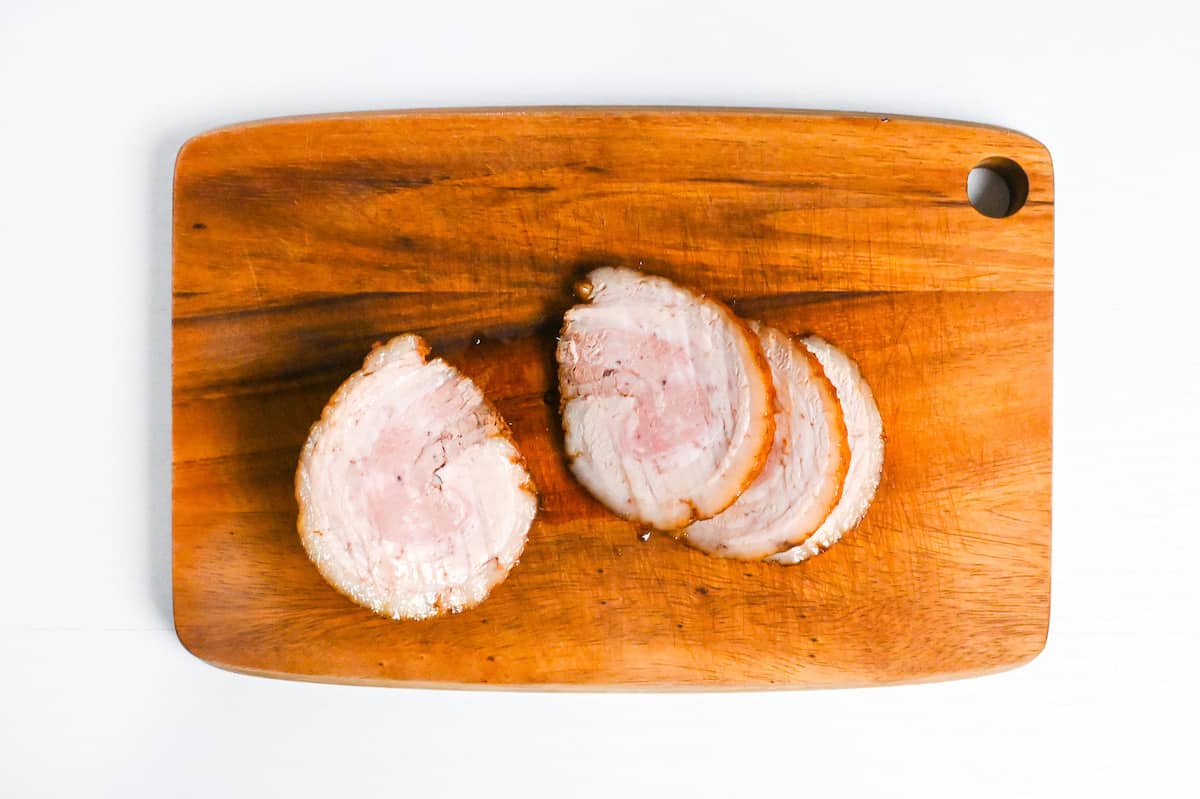
Take the white part of a Japanese leek and cut horizontally to the middle. Separate each layer and lay them flat on the chopping board.
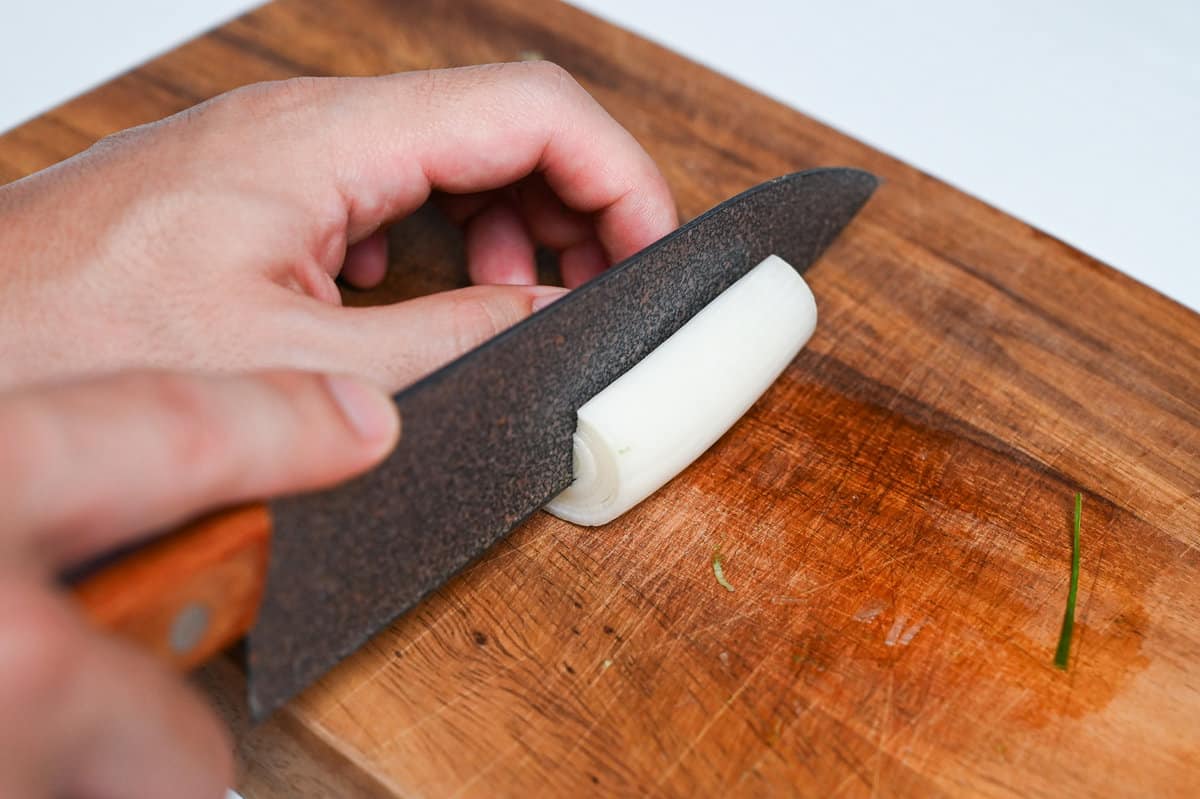
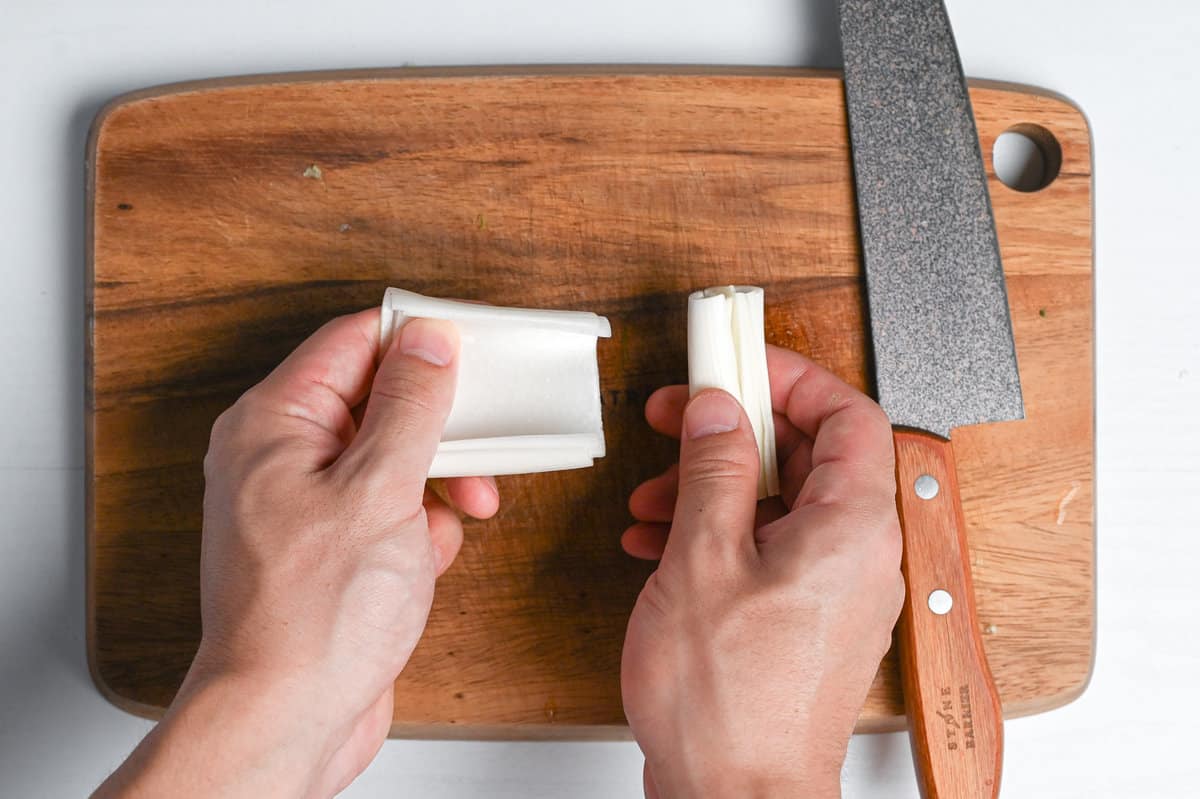
Thinly slice and place in a bowl of cold water for 5-10 minutes to remove any bitterness. Drain and shake dry before using.
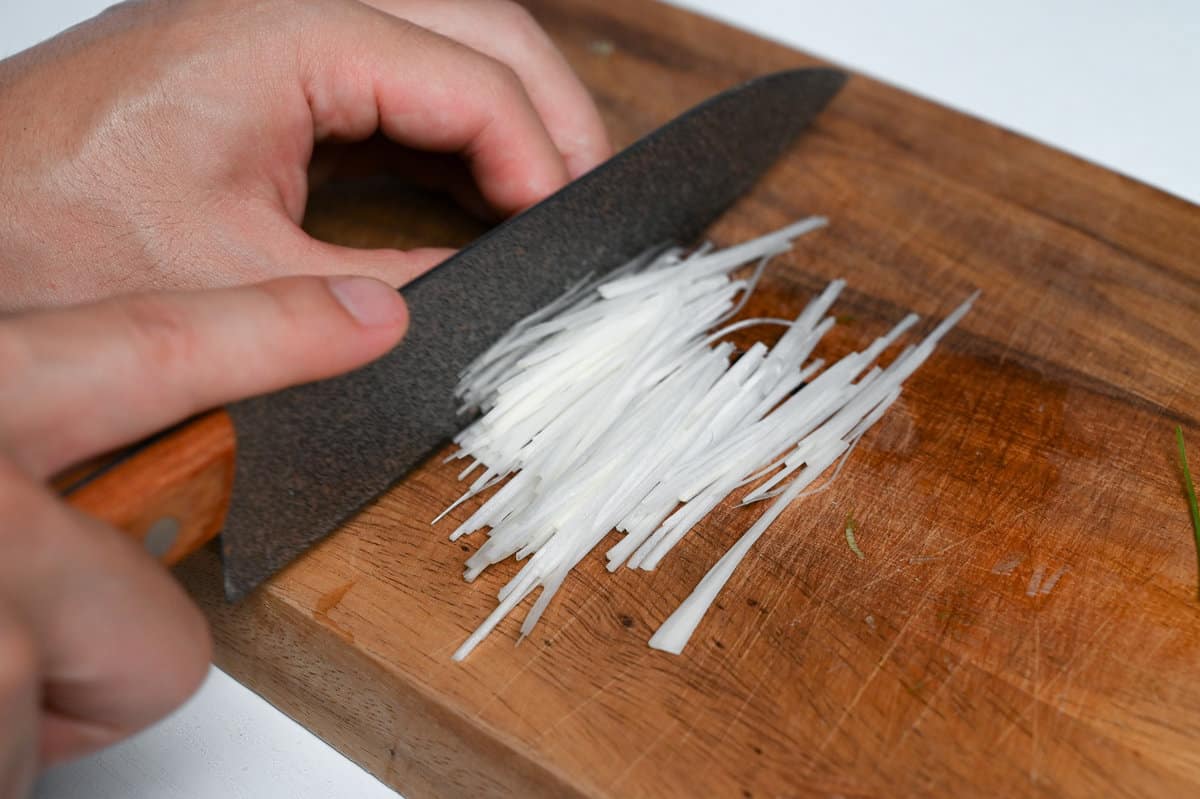
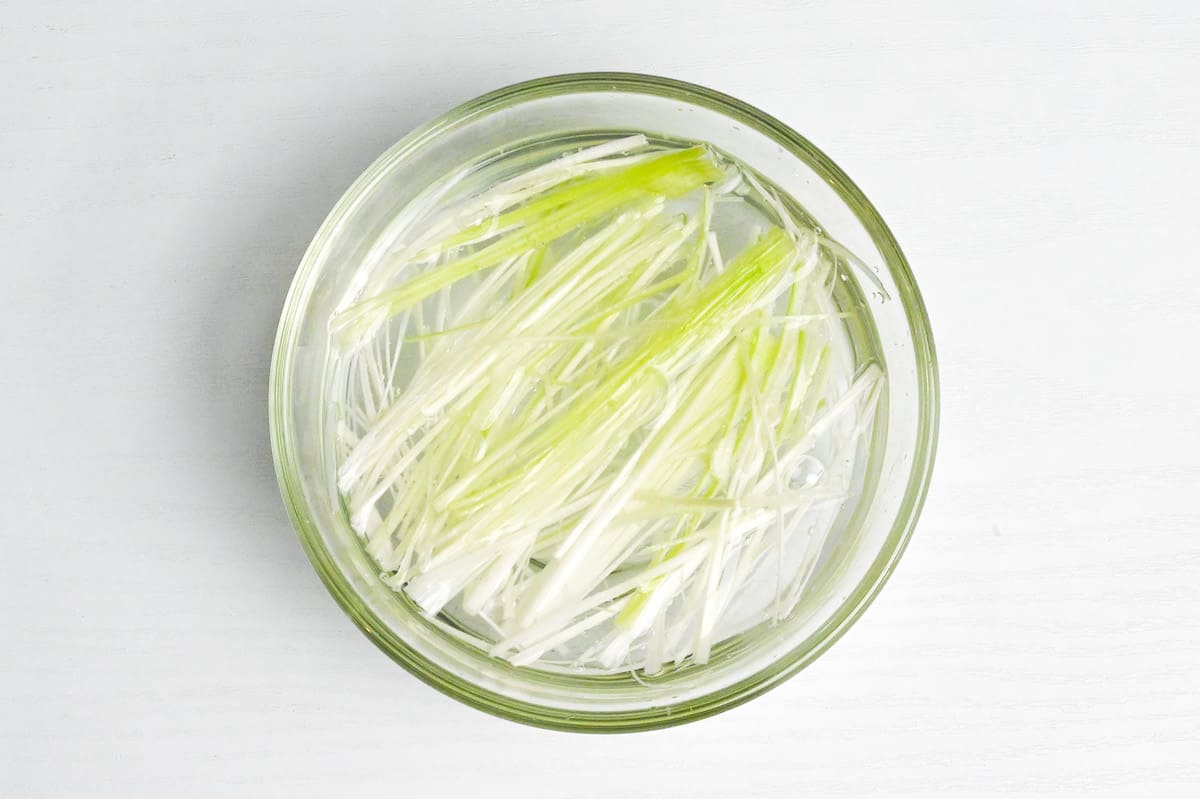
Divide cooked rice into each serving bowl and evenly distribute the chashu and halved ramen eggs. Top with shiraganegi, Japanese mayonnaise and chili threads (optional).
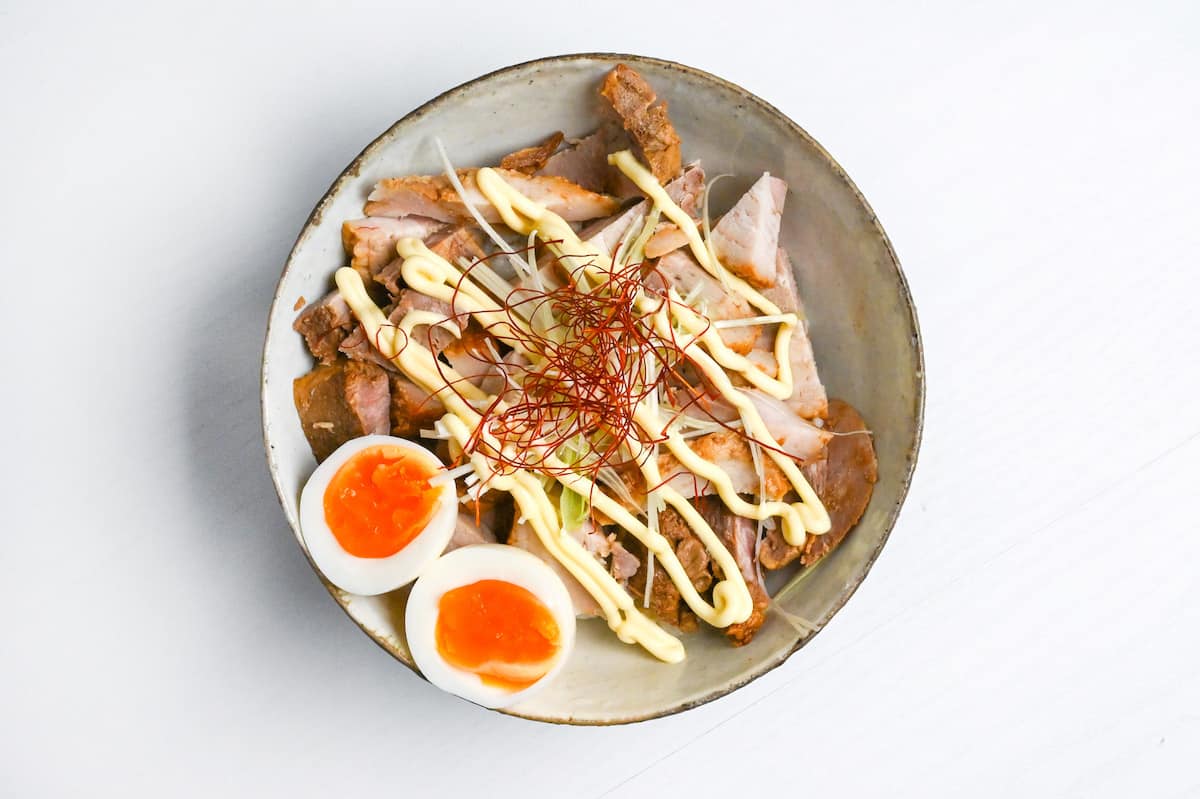
Enjoy!
Jump to Full Recipe Measurements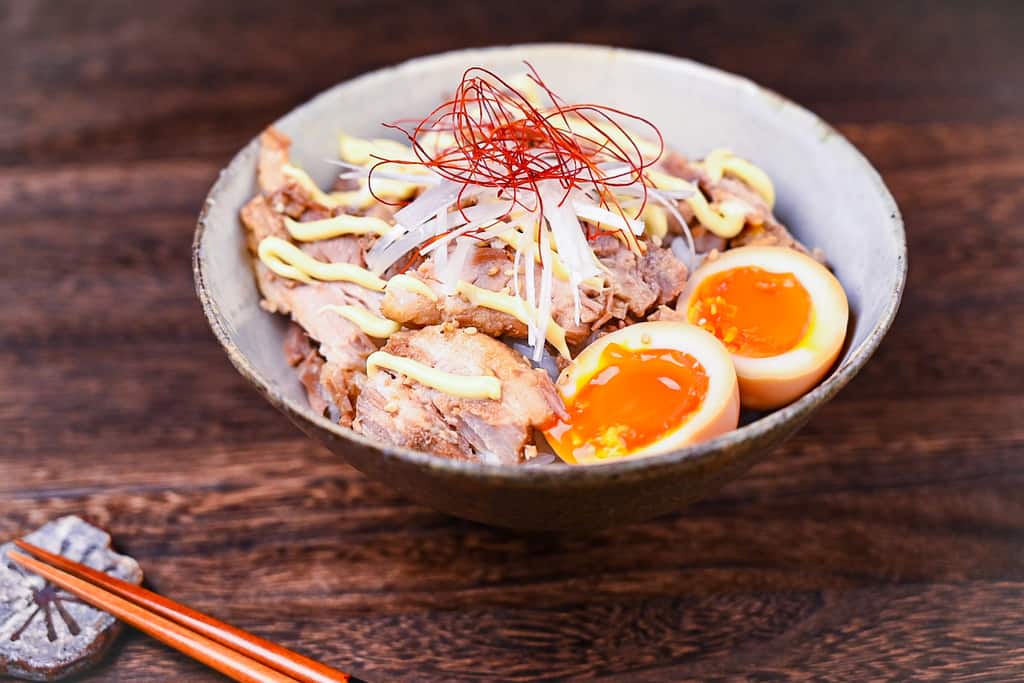
How to Store
I don’t recommend storing assemled rice bowl dishes, but if you have chashu leftover, store it in the fridge or freezer.
Making homemade chashu takes time and effort, but it’s worth it. To keep it fresh, refrigerate or freeze it.
Refrigerated chashu can last up to 3 days in a Tupperware container, while frozen chashu should be sliced, wrapped in food-grade plastic wrap, placed in a zipper freezer bag, and have all air removed before being sealed and put in the freezer.
Storage summary
Room temperature – Not recommended.
Refrigerated – Up to 3 days.
Frozen – Up to a month.
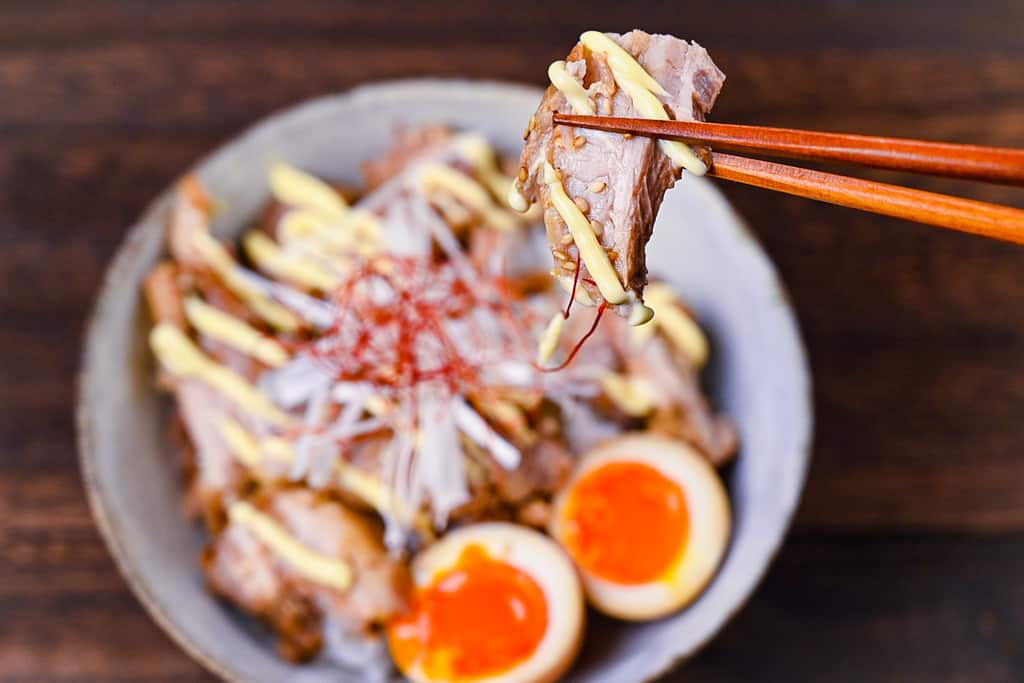
I hope you enjoy this Chashu Don recipe! If you try it out, I’d really appreciate it if you could spare a moment to let me know what you thought by giving a review and star rating in the comments below. It’s also helpful to share any adjustments you made to the recipe with our other readers. Thank you!
More Donburi Recipes
Hungry for more? Explore my donburi recipe collection to find your next favorite dishes!
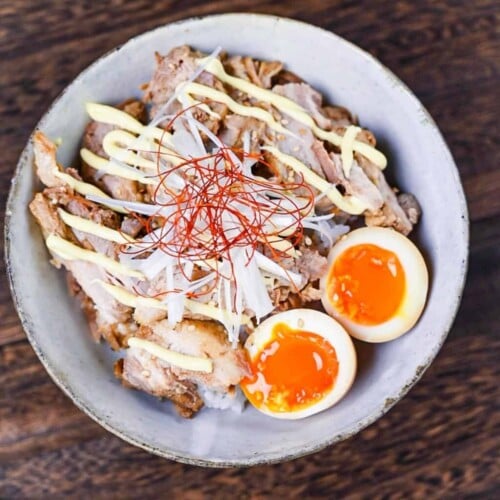
Pork Chashu Donburi (Rice Bowl)
Ingredients
Chashu
- 700 g slab skinless pork belly
- 50 g Japanese leek (naganegi) green part
- 50 g ginger root thickly sliced
- 3 cloves garlic
- 100 g onion roughly cut
- 1 tsp rice vinegar
Chashu Marinade
- 50 ml sake
- 1 tbsp mirin
- 250 ml pork stock from part 1
- 150 ml Japanese soy sauce (koikuchi shoyu)
- 30 g sugar
- 6 soft-boiled egg
Chashu Donburi
- 6 portions cooked Japanese short-grain rice
- Japanese mayonnaise
- Japanese leek (naganegi) white part, to make "shiraganegi"
- chili threads optional
My recommended brands of ingredients and seasonings can be found in my Japanese pantry guide.
Can’t find certain Japanese ingredients? See my substitution guide here.
Instructions
How to Make Chashu
- Pierce 700 g slab skinless pork belly on both sides with a fork, then roll it and secure it with string. Place in a pot and fill with cold water until submerged.

- Bring to a boil on a medium-high setting and scoop out any scum that floats to the top.

- Lower the heat to simmer and add 50 g Japanese leek (naganegi), 50 g ginger root, 3 cloves garlic, 100 g onion and 1 tsp rice vinegar. Place a drop lid on top and simmer on a low heat for 2 hours, turning half way through.

- Remove the pork from the pot and place in a ziplock bag.

- Transfer 250 ml pork stock from the chashu into a separate pan and add 50 ml sake, 1 tbsp mirin, 150 ml Japanese soy sauce (koikuchi shoyu) and 30 g sugar. Boil for 1 minute and then leave to cool.

- Once cool to the touch, add the marinade to the ziplock bag along with 6 soft-boiled eggs (optional) and seal. Marinate for 12 hours (ideally overnight).

- Heat a frying pan on medium-high and add the chashu. Add 100ml of leftover marinade and fry until thickened. Turn the pork occasionally to glaze all over.

- Rest for 5-10 minutes before slicing. Typically the middle slices would be saved for ramen and the end cuts would be used for donburi.

- Cut the white part of a Japanese leek (naganegi) halfway through horizontally and separate each layer. Press each layer flat on a chopping board and thinly slice. This is called "shiraganegi" and is used to garnish.

- Soak the shiraganegi in a bowl of cold water for 5-10 minutes to remove any bitterness.

- Dish up 6 portions cooked Japanese short-grain rice and cut the ramen eggs into halves. Evenly distribute the chashu and eggs between each portion and top with Japanese mayonnaise, drained shiraganegi and chili threads (optional).

- Enjoy!

Video
Notes
- You can make this dish with leftover chashu instead of making it all from scratch.
- The chashu can be kept in the fridge for up to 1 week, or 3-4 weeks in the freezer. (I recommend cutting it into slices before freezing.)
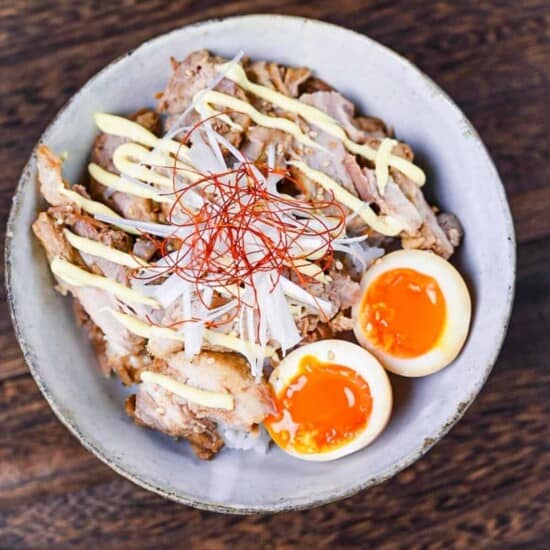



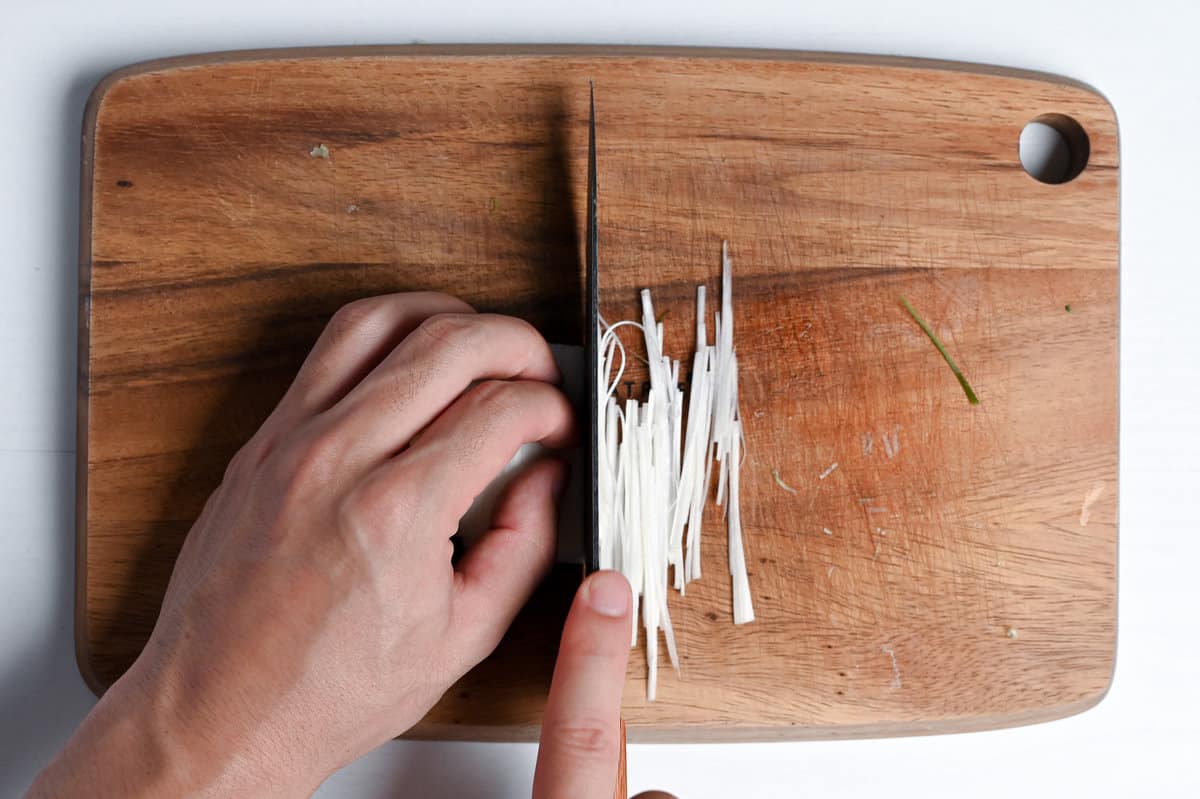
Leave a rating and a comment